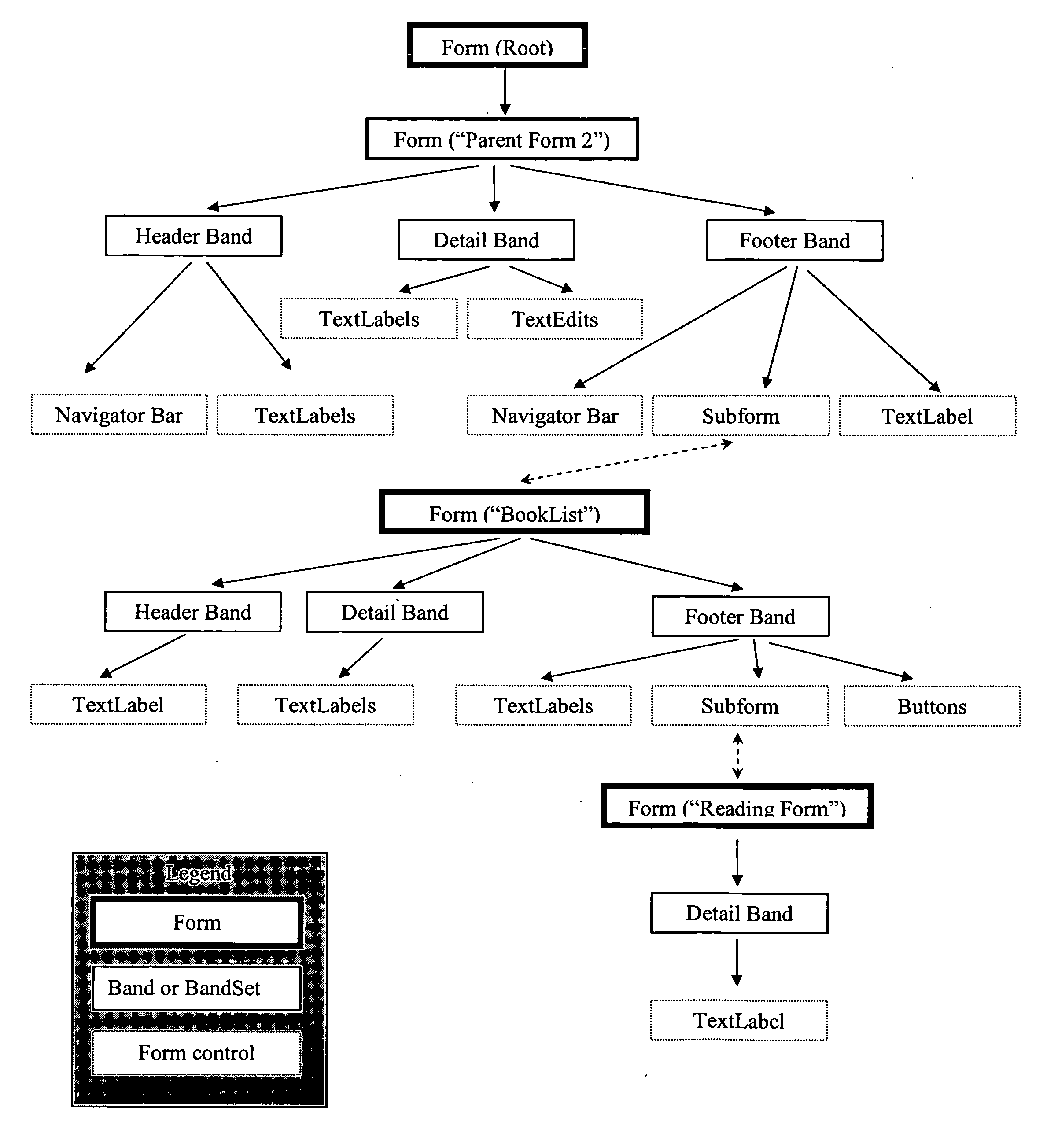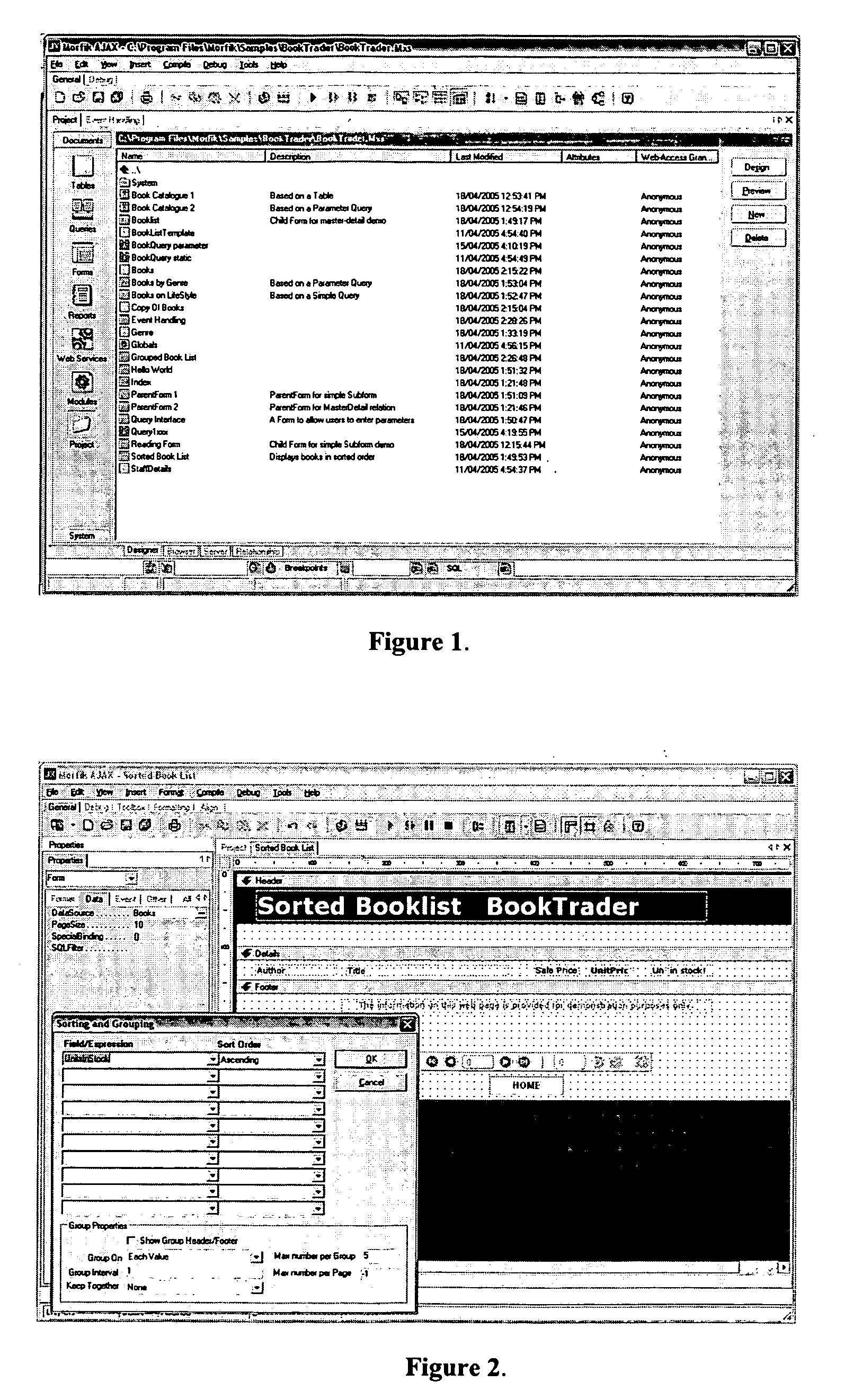System and method for designing web sites that perform like conventional software applications
- Summary
- Abstract
- Description
- Claims
- Application Information
AI Technical Summary
Benefits of technology
Problems solved by technology
Method used
Image
Examples
Embodiment Construction
[0041] The present invention is particularly applicable to a computer-implemented software-based system and method to code web sites that perform like conventional software applications, and it is in this context that the various embodiments of the present invention will be described. The examples included are based on a preferred embodiment which includes a Visual Programming Environment to create Ajax-based web scalable solutions.
[0042] In terms of design methodology, an xApp is created in a fully modularized manner via a Visual Programming Environment, as shown in FIG. 1. The hierarchy at design-time is fully maintained at run-time.
[0043] Insofar as the design-time process is concerned, in accordance with the various embodiments of the system and method of the present invention, the architecture of the xApp is characterized by, and built upon, a topological map. This map consists of a hierarchy of heterogeneous nodes, each of which is spatially and computationally related, and ...
PUM
 Login to View More
Login to View More Abstract
Description
Claims
Application Information
 Login to View More
Login to View More - R&D
- Intellectual Property
- Life Sciences
- Materials
- Tech Scout
- Unparalleled Data Quality
- Higher Quality Content
- 60% Fewer Hallucinations
Browse by: Latest US Patents, China's latest patents, Technical Efficacy Thesaurus, Application Domain, Technology Topic, Popular Technical Reports.
© 2025 PatSnap. All rights reserved.Legal|Privacy policy|Modern Slavery Act Transparency Statement|Sitemap|About US| Contact US: help@patsnap.com



